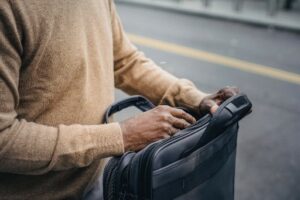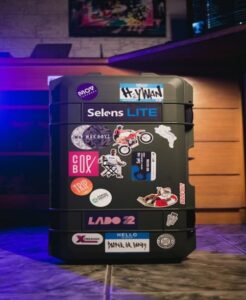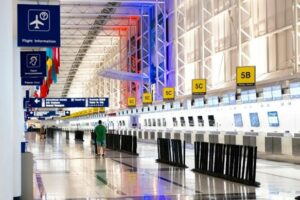
10 Ways to Make Sure Your Bags Don’t Get Lost When You Fly

As if flying wasn’t risky enough already, there’s also the annoying but plausible chance that your checked luggage will be misplaced by the airline. An IT company called SITA, which supplies airlines with bag-tracking systems, conducted research in 2022 and found that 26 million luggage were mishandled, meaning they were lost, delayed, damaged, or stolen.
Additionally, even though airlines have put in place several systems to reduce these incidents (like digital baggage tags and software that lets users track their bags in real time), there are proactive measures that passengers can take to reduce the likelihood of delayed or misplaced luggage.
Continue reading for some tips that travelers can use to monitor their bags and assist airlines in monitoring them.
- Use a luggage tag. Every time.

Use a luggage tag with your contact details on it even if you intend to carry you
r bag on (and make sure the tag is firmly fastened). You never know when having to perform a gate check will become necessary. Your name, phone number, and email address should be included in that contact information since those are probably the quickest ways to get in touch with you. Do not enter your home address as this could be dangerous.
- Put your contact information in the bag, too.
 Include your address and phone number inside the bag (in locations that are easy for the airline to see!) so they can get in touch with you. To speed up getting your trip itinerary to you, you can also think about packing it in your luggage.
Include your address and phone number inside the bag (in locations that are easy for the airline to see!) so they can get in touch with you. To speed up getting your trip itinerary to you, you can also think about packing it in your luggage.
- Book a non-stop flight whenever possible.

When there are fewer connections and layovers, there are less chances for errors and mistakes in handling between flights. This is particularly valid for foreign flights where luggage must pass through customs.
- Take old stickers off your luggage.
Travelers are permitted by the FAA to place AirTags in their bags; however, not all trackers will fulfil the safety standards. In a statement shared with AFAR, the FAA stated that ” the FAA said in a statement shared with AFAR. “Apple AirTags meet this threshold; other luggage tracking devices may not.” This criterion is met by Apple AirTags; other luggage tracking systems might not. You can provide the airline with the bag’s present location when you report it lost, which should expedite the process of finding it.
- Have a detailed description of your bag at the ready.
 In the event that your bag is lost, be prepared to provide the airline with precise information about its manufacturer, size, colour, and any other unique attributes so they know exactly what to search for. It’s not really helpful to say that a bag is “black” or “big”.bAdditionally, maintain an itemised record of everything you pack in your suitcase. When packing, it’s a good idea to snap a photo of your bag’s contents that you can send to the airline. (If you do need to file a claim for misplaced luggage, that information will be helpful.
In the event that your bag is lost, be prepared to provide the airline with precise information about its manufacturer, size, colour, and any other unique attributes so they know exactly what to search for. It’s not really helpful to say that a bag is “black” or “big”.bAdditionally, maintain an itemised record of everything you pack in your suitcase. When packing, it’s a good idea to snap a photo of your bag’s contents that you can send to the airline. (If you do need to file a claim for misplaced luggage, that information will be helpful.
- Arrive early for your flight and check in your luggage well in advance.
This can reduce the chances of a bag being mishandled because it gives airline staff ample time to properly tag and load your luggage onto the correct flight.
- Be persistent (but polite!) with follow-ups.
If your bag is lost, staff will have to search for it manually. Getting someone to care could go a long way.
- Make sure your bag is easily identifiable so that no one else accidentally grabs it off the carousel.
Try a bright ribbon or a luggage tag with a distinctive pattern or print or use luggage in one of the great colours that our favourite stylish luggage brands sell. It’ll also make it less likely that someone will mistake your bag for their own.

Credit – Afar Magazine




